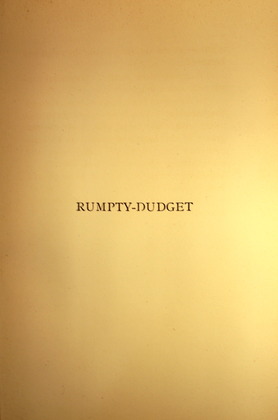Christianity and Moral Didacticism
Julian Hawthorne’s ‘Rumpty Dudget’ is a particularly dark fairy tale of which the didactic elements are initially unclear. Rumpty Dudget is an evil dwarf who has populated 100 corners of his enchanted tower with stolen children, and he requires one more in order to fill the 101st and seize control of the neighbouring kingdom. When he entraps the young Prince Hector, his siblings must undergo various magical trials to free him and save the land.
The dwarf is the classic fairy tale child-catcher figure, and his mode of imprisonment is chilling: ‘Inside the tower was a vast room with a hundred and one corners in it: and in each of the corners stood a little child, with its face to the wall and its hands behind its back. Who were the children, and how came they there? They were children, whom Rumpty Dudget had caught trespassing on his grounds’ (p.132). The dwarf represents darkness, evil, perhaps the devil himself, while the room can be read as a form of purgatory, where each child awaits indefinitely their judgment- will they be freed or does a greater punishment for their sin of ‘trespass’ (reminiscent of the fall and the Garden of Eden) lie in store. In his attempts to snare the children Rumpty Dudget flings black mud at them which marks them permanently: ‘all the washing and scrubbing in the world would not make it go away. It is always so with the mud that Rumpty Dudget throws; it seems to grow down into you until it fastens a root in your heart’ (pp.143-144). The mud is reminiscent of the original sin, and the children take on attributes of Adam and Eve by harbouring their first impure thoughts upon being marked: ‘Prince Hector (who had until then been the other of the best two little boys in the world), began from that time to wish to do things which he was told not to do’ (p.144).
The analogy of the Fall continues; next Rumpty Dudget tempts the children with a black ball which their benevolent guardian Tom the cat explicitly forbids them from touching. Like Adam and Eve, however, they submit to temptation, which ultimately leads to Hector’s downfall: ‘Hector, after jumping through the hedge, had run up to the black ball and stooped to pick it up. But the ball moved and unfolded itself, and a little cackling laugh came out of it […] It was no other than Rumpty Dudget himself’ (p.152). The apple-like ball has tempted Hector to disobey his benefactor, and in doing so he has consigned himself to purgatory in the tower’s ‘hundred-and-first corner’ (p.153).
It requires exhibiting selflessness and sacrificing themselves for one another for the children to rescue their brother, staple fairy tale morality, and in doing so they are reunited with their mother and gain access to a heavenly magical plane: ‘all the stars of the air and jewels of the earth are in that land, only more glorious and splendid than those that Hilda saw […] and they are all three living there […] to this very day’ (p.194). The Christian impulse here is unmistakable, as the children’s good deeds and rejection of sin are rewarded with eternal happiness in a place which exceeds the mortal plane.




































